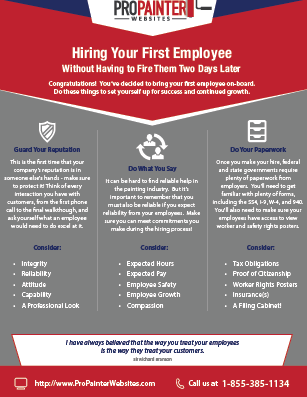Figure Out Just How Seasonal Variables Affect Industrial Outside Painting Success And Discover The Very Best Times To Guarantee Long Lasting Results For Your Task
Figure Out Just How Seasonal Variables Affect Industrial Outside Painting Success And Discover The Very Best Times To Guarantee Long Lasting Results For Your Task
Blog Article
Content Created By-Burnham Skafte
When you're planning a business external painting job, seasonal factors can make or break your outcomes. You'll wish to take into consideration how temperature level and humidity impact paint application and drying out times. Selecting https://garage-painters-near-me18999.blogscribble.com/35137636/shade-selection-basics-an-in-depth-guide-to-repainting-the-exteriors-of-industrial-buildings can ensure your paint sticks correctly and lasts longer. However which periods are truly the most effective for this type of work? Allow's discover the key elements that can affect your job's success.
The Effect of Temperature Level on Paint Application
When you're preparing an industrial exterior painting job, the temperature can substantially influence just how well the paint adheres and dries out.
Ideally, you intend to paint when temperature levels vary between 50 ° F and 85 ° F. If it's too cold, the paint might not cure appropriately, resulting in concerns like peeling or splitting.
On the other side, if it's as well warm, the paint can dry also quickly, avoiding appropriate attachment and causing an uneven finish.
You need to likewise consider the time of day; morning or late afternoon offers cooler temperatures, which can be much more positive.
Always check the supplier's suggestions for the certain paint you're using, as they commonly provide advice on the suitable temperature level range for optimum results.
Humidity and Its Impact on Drying Times
Temperature level isn't the only environmental variable that affects your commercial exterior paint job; humidity plays a considerable role too. High moisture levels can slow down drying out times substantially, affecting the general quality of your paint work.
When the air is filled with dampness, the paint takes longer to cure, which can bring about problems like bad bond and a greater risk of mold development. If you're painting on a particularly humid day, be prepared for extended delay times between layers.
It's important to monitor neighborhood weather and strategy accordingly. Ideally, go for humidity levels between 40% and 70% for optimal drying out.
Keeping these consider mind ensures your job remains on track and delivers a long lasting coating.
Best Seasons for Commercial Outside Painting Projects
What's the best season for your business exterior painting projects?
Springtime and very early loss are typically your best choices. Throughout these periods, temperatures are mild, and humidity levels are commonly reduced, creating suitable problems for paint application and drying.
Prevent summer's intense heat, which can trigger paint to dry also quickly, leading to bad bond and surface. Similarly, winter season's cold temperature levels can hinder proper drying and curing, running the risk of the longevity of your paint task.
Go for days with temperatures between 50 ° F and 85 ° F for optimal outcomes. Keep in click to read to check the local weather forecast for rain, as damp problems can destroy your task.
Planning around these aspects ensures your painting job runs smoothly and lasts much longer.
Final thought
Finally, intending your business outside paint projects around seasonal factors to consider can make a substantial difference in the outcome. By scheduling work during the perfect temperature levels and humidity levels, you'll ensure far better bond and drying out times. Keep in mind to watch on regional weather prediction and pick the right time of year-- spring and early autumn are your best options. Taking these steps will certainly aid you attain a sturdy and specialist coating that lasts.
